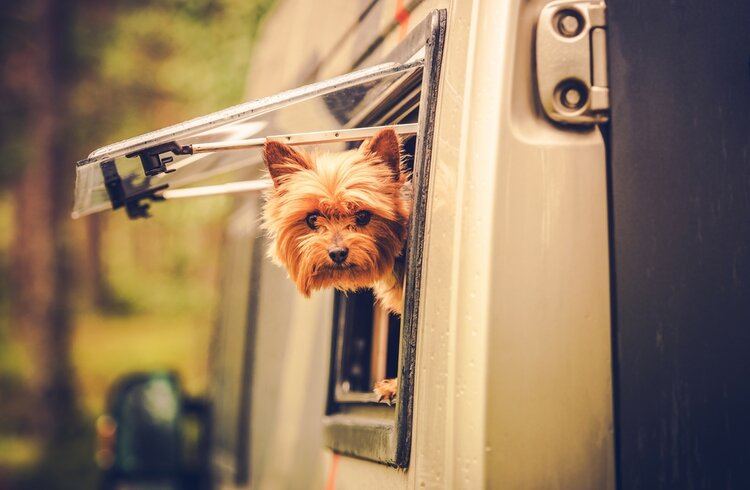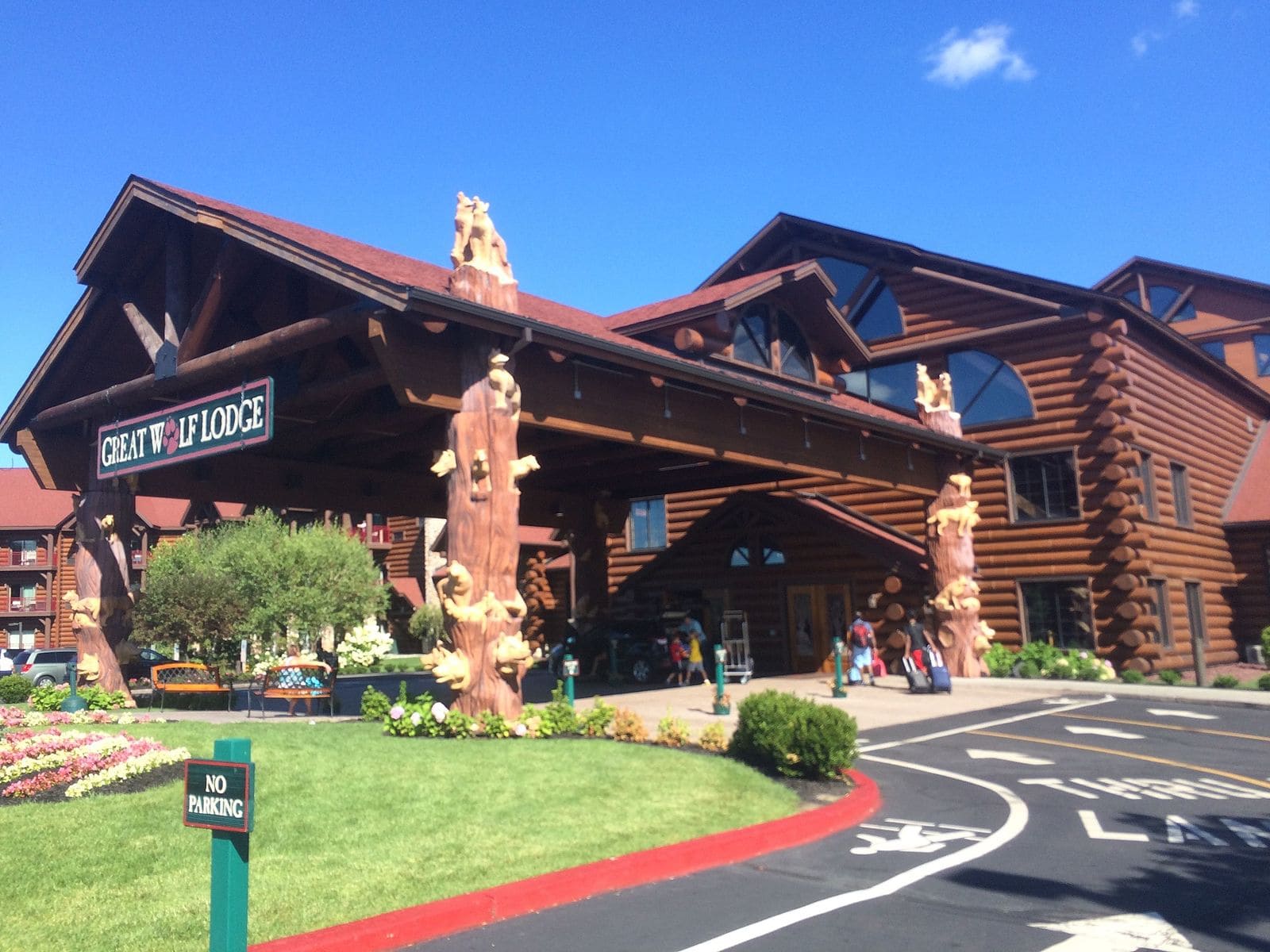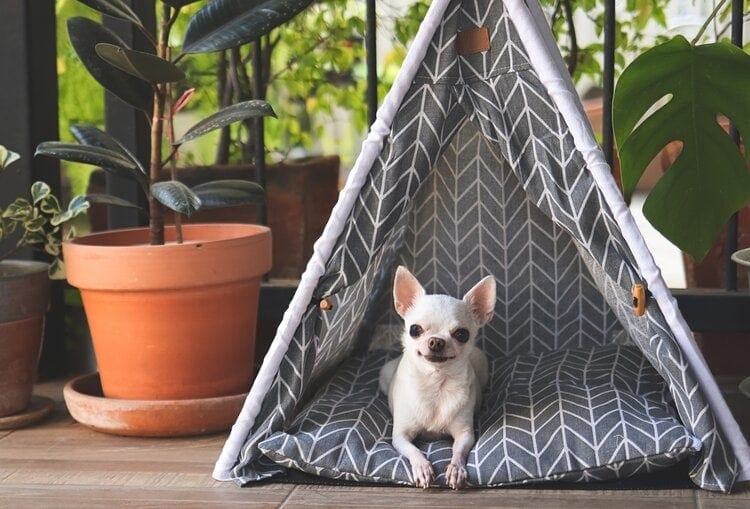Scottish Deerhound vs. Irish Wolfhound: What’s the Difference? (With Pictures)

Updated on
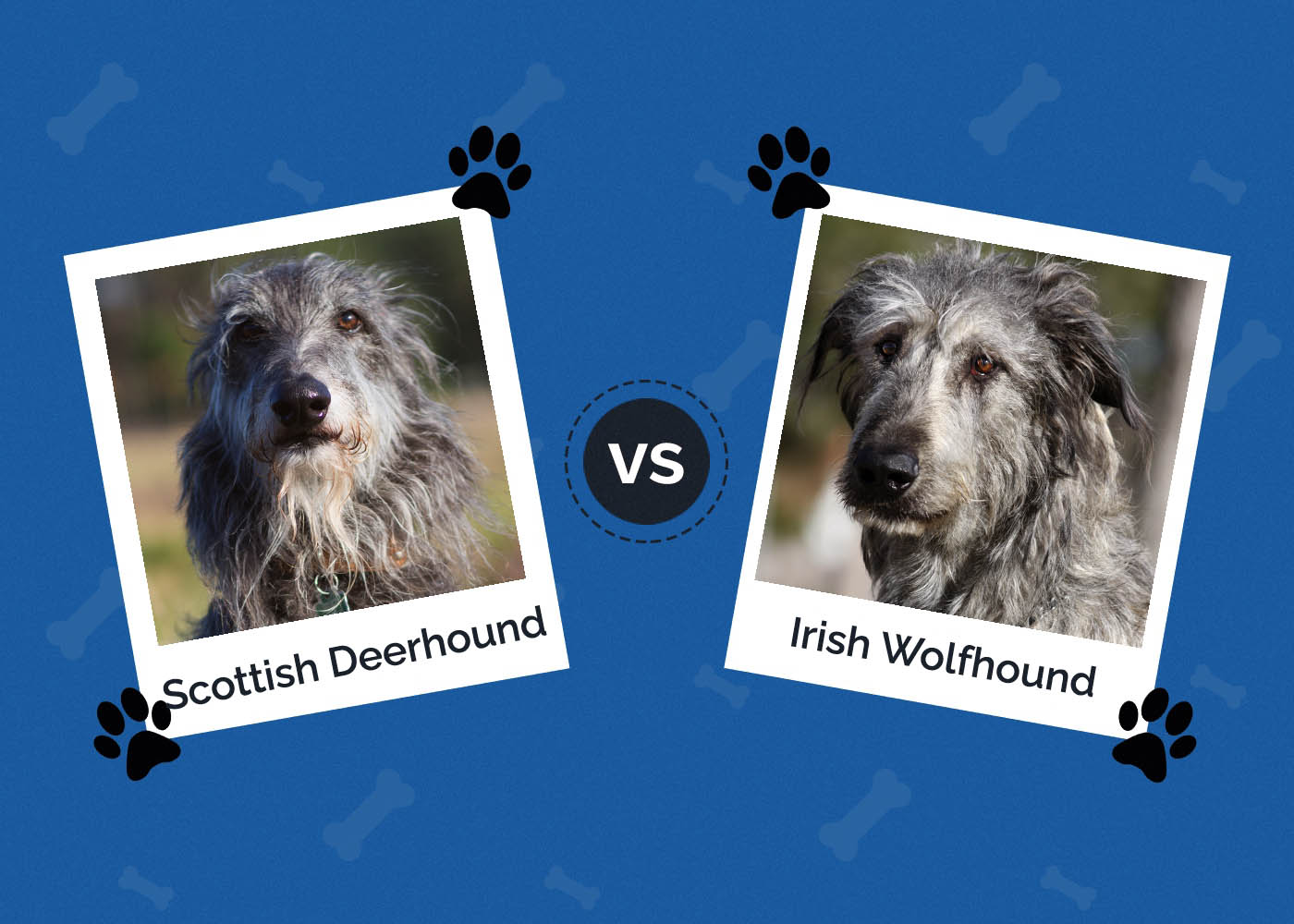
The Scottish Deerhound and the Irish Wolfhound are both large breeds with wiry coats and loyal and courageous natures. Both breeds are revered sighthounds, are among the world’s largest breeds, and have been around for centuries, so it is difficult to pinpoint either breed’s exact origin.
Regardless, breeds require a great deal of time and dedication. While these dogs are similar on the surface, there are a few notable differences to be aware of. In this article, we take a deeper dive into each breed and look at what makes them so unique.
Deerhound vs Wolfhound: Visual Differences
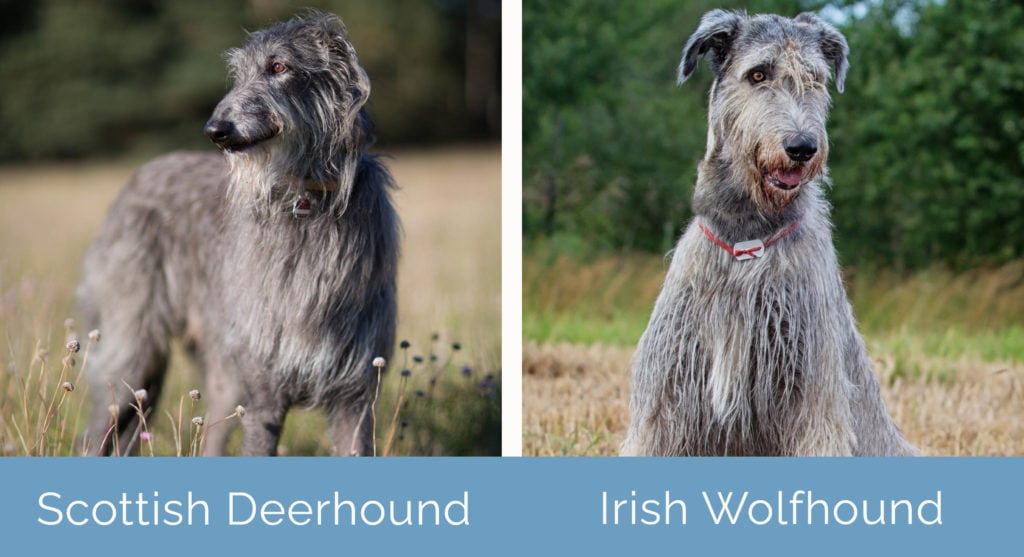
The Scottish Deerhound and the Irish Wolfhound are commonly mistaken for each other, and it’s easy to see why. They are both large dogs with short to medium-length wiry coats and similar coloring. The biggest visual difference is that the Irish Wolfhound is slightly taller than the Deerhound, by up to 5 inches, and is typically more muscular too. The Wolfhound also has a slightly curved tail, while the Deerhound has a longer, more tapered tail that almost reaches the ground.
A Quick Overview
- Average height: 28–32 inches
- Average weight: 75–110 pounds
- Lifespan: 8–11 years
- Exercise needs: 2+ hours/day
- Grooming needs: Moderate
- Family-friendly: Yes
- Dog friendly: Mostly
- Trainability: Good
- Average height: 32–35 inches
- Average weight: 115–180 pounds
- Lifespan: 6–8 years
- Exercise needs: 1–2 hours/day
- Grooming needs: Low
- Family-friendly: Yes, but better suited for families with older children
- Dog friendly: Yes
- Trainability: Good but slow
Scottish Deerhound Overview
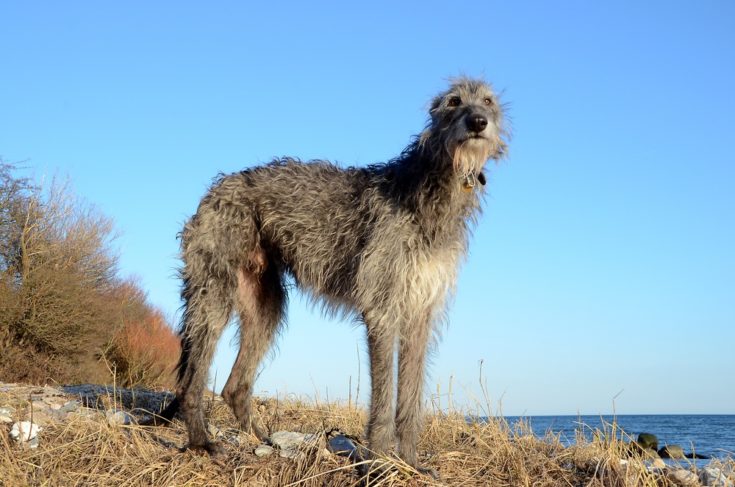
This Scottish Deerhound, also known as the “Royal Dog of Scotland,” has been used since at least the early 16th century to hunt deer, but much of the breed’s past and origins are unknown. In their homeland of Scotland, they were reserved only for noblemen, and no one beneath the rank of earl could own one. Of course, this restricted ownership almost lead to the extinction of the breed several times, but the breed was brought back from the brink and came over to the United States in the late 18th century. The breed has gradually increased in popularity and numbers but is still fairly rare to this day.
Personality
Scottish Deerhounds are noble dogs that carry themselves with an air of dignity and pride. They are gentle dogs despite their strength and power and are brave despite their sensitive nature — yet they are never aggressive. They are highly affectionate dogs that are friendly to strangers and family and friends alike and are generally great with children. While these dogs love a good session of vigorous exercise, don’t be surprised when these gentle giants attempt to clamber onto your lap for a cuddle!
Training and exercise
The Scottish Deerhound is a calm and docile breed despite its massive size but will still need at least two hours a day of exercise to stay happy and healthy. They love regular runs and off-leash exercise and need a large yard to play and exercise in; these dogs are not suitable for apartment living.
Early socialization and training are essential for these gentle giants because they need to be able to take commands and stay under your control. They are fairly easy to train due to their loyal nature and eagerness to please, but they do have a stubborn, independent, and aloof streak that can be a challenge for novice owners. They will need a fair bit of patience and dedication while training and will not respond well to harsh reprimands due to their sensitive nature.
Positive reinforcement training is ideal with these dogs, and giving them praise and rewards after they do a good job will go a long way toward getting them to obey commands.
Health and care
Scottish Deerhounds are large dogs, and with that size comes a few different potential health issues. Like many sighthounds, Deerhounds are highly sensitive to anesthesia, so be sure to alert your vet if they are not already aware of it. Osteosarcoma, gastric torsion, and hip and elbow dysplasia are other common issues that can affect large breeds like Deerhounds.
These dogs need to eat around 3–4 cups of high-quality kibble a day to help maintain their muscle mass and fast metabolism. We recommend dividing this into two meals a day and supplementing it with extra protein from lean meats and organ meats.
Deerhounds have thick, wiry, and harsh coats that were developed to protect them while hunting through the harsh terrain of the Scottish Highlands. While their coat is fairly low-maintenance and easy to groom, they do shed, so you’ll need to brush them weekly to remove dead hair.
Suitability
Scottish Deerhounds are great family dogs, but you’ll need to exercise caution around small children because these dogs can easily accidentally knock them over while playing. They are not your typical family dog and playmate for kids, but they can be great family dogs nonetheless. They are ideal for owners who live in homes with large yards or farms and lead an active lifestyle.
Irish Wolfhound Overview
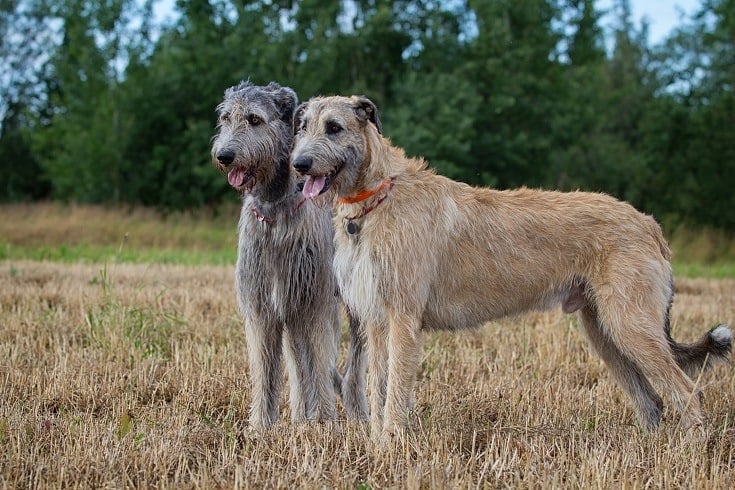
Irish Wolfhounds were traditionally used for hunting — their large size was taken advantage of for taking down game like elk and wild boar, and they were brave and loyal guard dogs too. These dogs were also widely used in war because their height meant that they could easily pull down soldiers from chariots and horseback. Only Irish nobles and royalty were permitted to own and gift Wolfhounds. This, of course, caused their numbers to decline, along with the extinction of wolves and elk in Ireland, but their numbers steadily increased during the late 1800s.
Personality
Irish Wolfhounds are extremely intelligent, and despite their history of hunting and their intimidating stature, they are gentle pooches too. They are calm and docile animals in general but are capable of springing into action at a moment’s notice, making them ideal watchdogs. They are sensitive dogs that don’t respond well to harsh treatment and training, and this type of training will only serve to shut them off from their owner.
While these dogs are courageous and fearless at times, they are rarely aggressive. They are also supremely loyal and affectionate but not overly clingy or attention-seeking, and they are fast and agile but obedient and controlled. They are generally fine with other dogs, but smaller pets and cats may be seen as prey, so early socialization and adequate training are essential.
Training and exercise
Irish Wolfhounds don’t need as much exercise as Deerhounds, but 1–2 hours a day are essential to keep them healthy and happy. While Wolfhounds are happiest indoors with their owners, they are certainly not suited for apartment living and need a large yard to run around in. Be aware that large breeds are prone to joint problems, so they should only be exercised for about 20-40 minutes a day in their first year to avoid joint damage.
Wolfhounds are eager to please, intelligent, and easy to train. That being said, they are fairly slow to mature, so training can take some time. Patience and consistency are essential in training these pooches, and their sensitive nature makes positive reinforcement training a must.
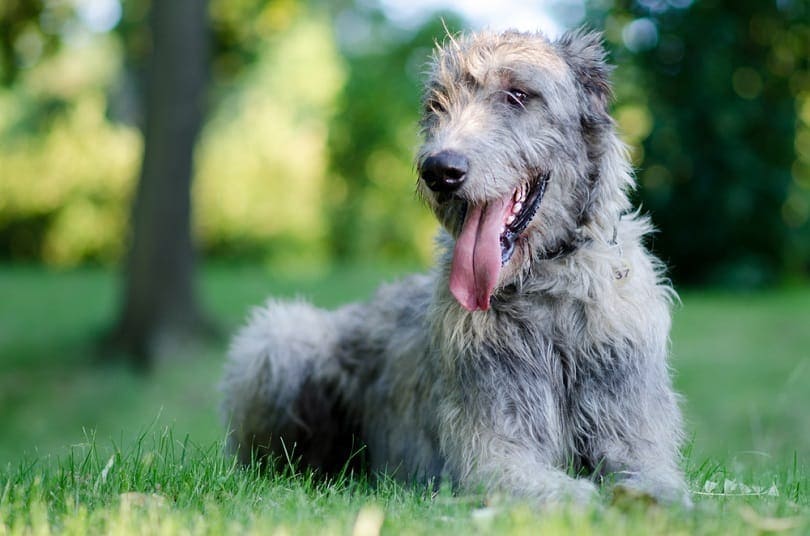
Health and care
Irish Wolfhounds are generally a healthy breed but are prone to issues common in large breeds. These include anesthesia sensitivity, hip and elbow dysplasia, cardiomyopathy, and gastric torsion.
They will need around 4–6 cups of high-quality kibble per day, ideally divided into two meals. This should be adjusted depending on your Wolfhound’s activity levels, size, and age, and ideally, it should be supplemented with lean meats and organ meats. These dogs are low-maintenance and easy to groom, but they do shed consistently throughout the year and need regular brushing.
Suitability
Irish Wolfhounds are great family dogs and perfect for active owners. They have a fairly strong prey drive, so you’ll need to keep an eye on them around your cat, but they are relatively easy to train, and early socialization should help too. While they love to be indoors with their owners, they are not suitable for apartments and you’ll need a decent sized yard for them to play in.
What Are the Differences?
These two breeds are similar in both personality and appearance, and not only are they often mistaken for each other but were also long considered as the same breed by many breeders. It is easy to understand why, but the subtle differences between the two become quickly apparent once you get to know each breed in more detail.
Irish Wolfhounds are slightly larger and more muscular than Deerhounds, are a little easier to train, and don’t require as much exercise. Deerhounds can be stubborn and independent at times, making training a challenge, and they require a fair bit more exercise to stay happy and healthy.
They both have low grooming needs due to their coarse and wiry coats, they have similar dietary needs with sensitive personalities and loyal and alert temperaments, and both breeds make great family pets, exercise companions, and loyal watchdogs.
Featured Image Credit: (L) Antonia Gros, Shutterstock | (R) GoDog Photo, Shutterstock




